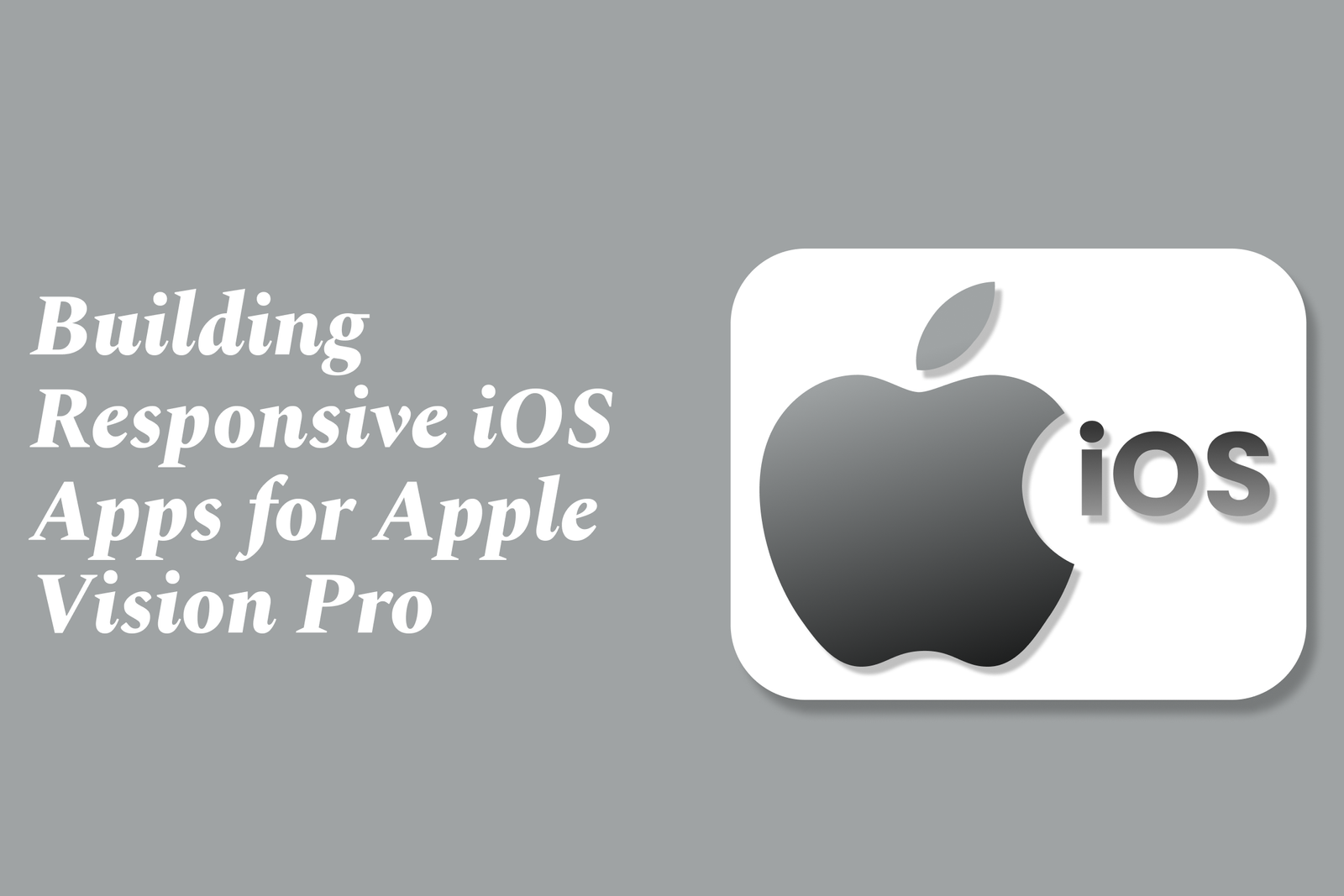Building responsive iOS apps for Apple Vision Pro
Building responsive iOS apps for Apple Vision Pro involves adapting your apps to visionOS’s spatial computing environment, ensuring seamless, intuitive interactions across devices by leveraging new UI frameworks and testing beta versions with tools like TestFlight for optimal performance.
Building Responsive iOS Apps for Apple Vision Pro
1 ) Introduction to Apple Vision Pro App Development
Apple Vision Pro introduces a new platform requiring developers to build responsive iOS apps that integrate seamlessly with visionOS, Apple's operating system for spatial computing. Developers accustomed to iOS apps need to adapt to new interaction models and device capabilities inherent to Apple Vision Pro.
2 ) Testing Beta Apps with TestFlight
TestFlight is a critical tool that facilitates testing beta versions of apps and App Clips across Apple’s device ecosystem—including iPhone, iPad, Mac, Apple TV, Apple Vision Pro, Apple Watch, and iMessage. Developers distribute beta builds to testers via email or public links, which allow access for up to 90 days.
3 ) Pre requisites for Testing Apps on Apple Vision Pro
Accept an invitation from the developer to join beta testing.
Use a compatible device running the required OS: visionOS 1 or later for Apple Vision Pro.
Developers can restrict beta test access based on device and OS versions.
4 ) Installation and Usage of TestFlight with Vision Pro
Install TestFlight from the App Store on the testing device.
Install available beta builds via received invitations.
TestFlight supports up to 30 devices per tester to run beta apps.
Automatic updates can be enabled to keep beta apps current.
5 ) Supported OS and Language Compatibility
visionOS apps require Apple Vision Pro running visionOS 1 or later.
TestFlight supports multiple languages for visionOS, including Arabic, Chinese (Simplified/Traditional), English (Australia, U.K., U.S.), French (Canada), German, Italian, Japanese, Korean, Spanish, and Spanish (Latin America).
6 ) Handling In App Content and Background Assets
To ensure smooth functionality, developers must enable options for automatic downloading of in app content and background assets such as Apple Hosted Background Assets and Managed Background Assets. These require minimum OS versions like iOS 16 or later and visionOS 2.4 or later for full support.
7 ) Testing Period and Transition to App Store Versions
Each beta build is valid for 90 days from upload to App Store Connect.
After expiration, beta builds cannot be launched.
Users must then download or purchase the official App Store version to continue use.
In app purchases during beta do not carry over to public releases but are free during testing.
Summary:
Developers building responsive apps for Apple Vision Pro must leverage TestFlight for distributing and testing beta apps on visionOS devices. Understanding the platform's OS requirements, language support, asset management, and testing lifecycle is essential to create effective and immersive spatial computing experiences on Apple Vision Pro.
https://justacademy.in/news-detail/flutter-automated-testing-tools-2025
https://justacademy.in/news-detail/most-common-ios-interview-questions-in-2025
https://justacademy.in/news-detail/flutter-india-summit-2025:-key-takeaways
https://justacademy.in/news-detail/latest-android-camera-app-innovations
https://justacademy.in/news-detail/how-ios-19-improves-app-crash-reporting
Related Posts
Java supports GDPR and data privacy by enabling secure data handling through encryption, controlled access, and precise data management. It allows developers to minimize PII exposure, ensure data confidentiality, and design workflows that comply with data protection regulations effectively.
Java code quality tools have evolved to include advanced static analysis, integrated security checks, and AI-powered code reviews. These updates help developers detect bugs, enforce coding standards, and enhance security, streamlining the development process and improving overall code reliability.
Java remains a cornerstone in big tech companies, evolving with modern features like records, pattern matching, and virtual threads. Its robust ecosystem, enhanced performance, and growing AI integrations keep it vital for both legacy systems and innovative new projects.
Java and CI/CD pipeline optimizations streamline Java application development by automating builds, tests, and deployments. They improve efficiency through parallelization, caching, and secure secrets management, enabling faster feedback loops and more reliable, scalable software delivery.
Java supports modern cryptography standards through its flexible Java Cryptography Architecture (JCA), enabling integration of advanced algorithms like AES, EdDSA, and post-quantum tools. Libraries like Bouncy Castle offer FIPS-certified, hardware-accelerated implementations for secure development.
Java 23 enhances record patterns by enabling concise, direct destructuring of record components within pattern matching, simplifying type checks and data extraction. This improvement boosts code readability and expressiveness by reducing boilerplate in handling immutable data classes.
Java remains a top choice for mobile app backends, powering scalable, secure, and high-performance server-side solutions. Latest trends include cloud-native microservices, reactive programming, and enhanced JVM optimizations, enabling efficient, flexible, and robust mobile backend development.
Java SE 24 and LTS Java SE 21 offer enhanced features and performance, while Apache Spark 4.0.0 introduces Scala 2.13 support and advanced ML and SQL capabilities. Together, they empower developers to build scalable, high-performance data applications with modern tools.
JUnit 5 modernizes Java testing with a modular architecture, improved assertions, and seamless Java 8+ support. Beyond JUnit, tools like Mockito and AssertJ enhance mocking and assertions, creating a powerful, flexible ecosystem for writing clean, efficient Java unit tests.
Java plays a pivotal role in cloud automation tools by providing a robust, platform-independent language used to build scalable automation frameworks like Jenkins and Selenium, enabling efficient CI/CD pipelines, testing, and orchestration across diverse cloud environments.










